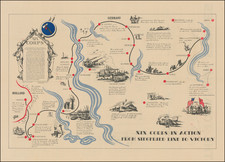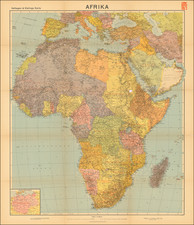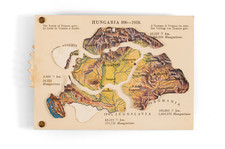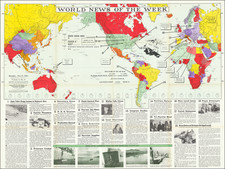Grumman TBF-I, Avenger (Double Cyclone), published by Fosh & Cross Ltd. in September 1942, offers a useful representation of a torpedo bomber that played a crucial role in the aerial campaigns of the Second World War. Distinguished as the TBF-I Avenger with its notable "Double Cyclone" engine, the poster recounts the aircraft's wingspan, length, and other pertinent metrics, presenting a holistic overview of this iconic airborne marvel.
The 1940s marked a period of intense aeronautical advancements, spurred primarily by the exigencies of World War II. Nations were locked in a relentless race to outdo each other in aerial supremacy, and the United Kingdom was no exception. The Grumman TBF Avenger stood out as a potent torpedo bomber, featuring prominently in many strategic operations, most notably in the Pacific Theatre against Japanese naval forces. This bomber's design reflected the integration of cutting-edge technology and aviation innovation of its time.
The present poster, issued by Fosh & Cross Ltd., served as an identification guide for military and civilian personnel alike. In the theatre of war, quick identification of friendly and enemy aircraft was vital, ensuring accurate communication and effective coordination amongst allied forces. This was not merely an informational tool but an essential instrument that may have directly influenced combat outcomes.
The emphasis on the Avenger's "Double Cyclone" engine underscores the significance of this twin-row, supercharged radial engine, known for its power and reliability. Such a mention sheds light on the importance of engine technology in determining an aircraft's combat efficacy and resilience. The presented specifications—span, length, weight, among others—contribute to an intricate understanding of the aircraft, illuminating its design intricacies and strategic relevance.
In essence, the Grumman TBF-I, Avenger (Double Cyclone) poster stands as a testament to the dynamic nature of wartime aviation, capturing the essence of an aircraft that shaped many decisive moments in the aerial combats of the Second World War. Through this, it offers a nuanced glimpse into the technological and strategic facets of mid-20th-century warfare.









![(Second World War - Sudetenland) Wer Braucht Sicherheit im Südosten? [Who Needs Security in the Southeast?]](https://storage.googleapis.com/raremaps/img/small/98159.jpg)



![(World War II) [Iwo Jima Aerial Reconnaissance Photograph, March 8, 1945]](https://storage.googleapis.com/raremaps/img/small/83776.jpg)
